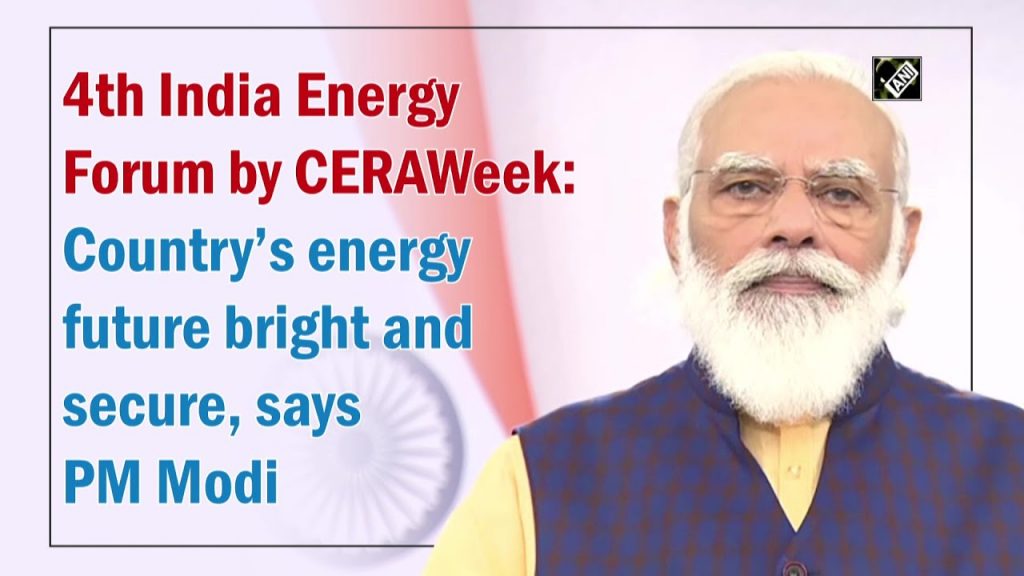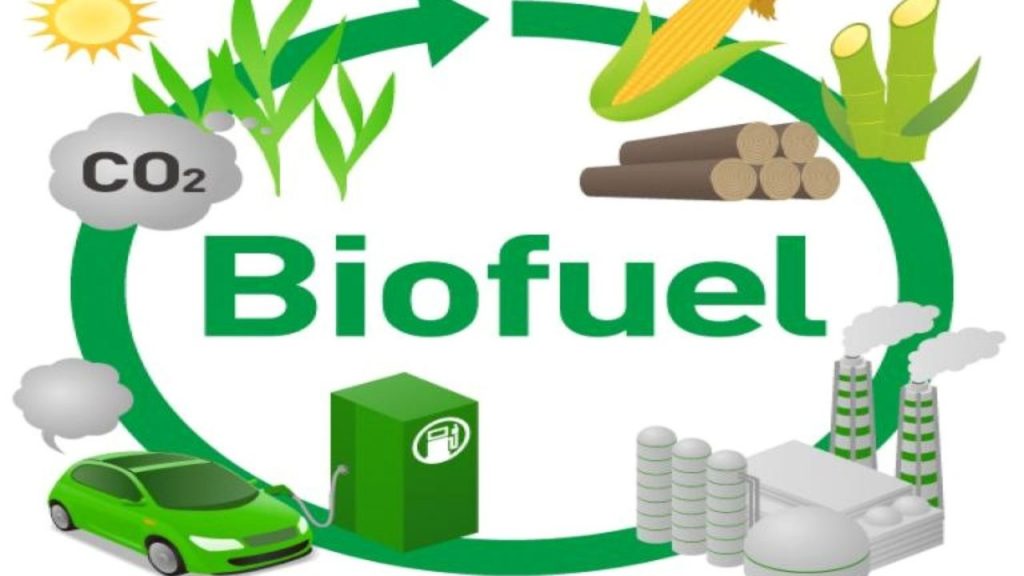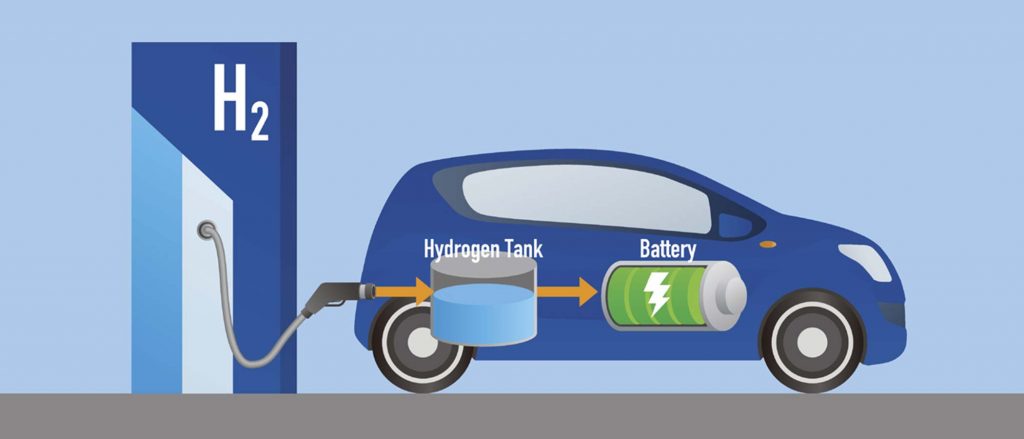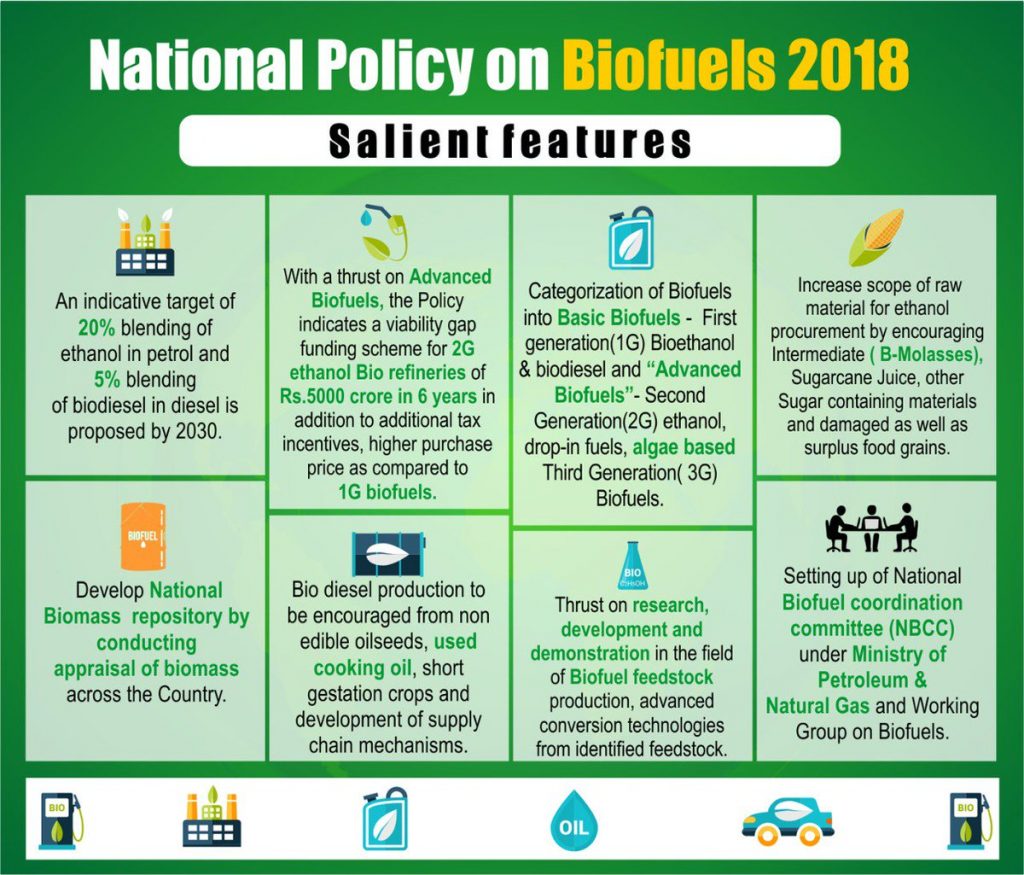Contents
- PM delivers inaugural address at 4th India Energy Forum.
- MSP Operations during Kharif Marketing Season 2020-21.
- Raksha Mantri Shri Rajnath Singh holds bilateral delegation level meeting with his US counterpart Mark Esper; Both aides to sign agreement of BECA during the visit.
- Union Minister for Education virtually inaugurates Mechanical Engineering Block, Bio-Technology and Chemical Engineering Block and other facilities of NIT Arunachal Pradesh. Shri Kiren Rijiju appreciated the efforts of the Ministry of Education to bring out New Education Policy (NEP) for betterment of education system from primary to higher level.
- New age sustainable disinfectants and sanitizers may bring relief from chemical ones with side effects. “The structures and processes which made these extraordinary achievements possible are being incorporated in the upcoming Science, Technology and Innovation Policy 2020”: Prof. Ashutosh Sharma, DST Secretary.
- Mid-Term Review held for implementation of Jal Jeevan Mission in Meghalaya.
- Tribes India brings more of Nature’s Bounty in its range with inclusion of 100 New Forest Fresh Organic Products.
- Ministry of Tourism organizes webinar on “Bundi: Architectural Heritage of a Forgotten Rajput Capital” under Dekho Apna Desh Webinar Series.
- Newly identified tectonically active zone in Himalayas could alter earthquake study & predictions.
PM delivers inaugural address at 4th India Energy Forum.
Focus: GS3: Infrastructure: Energy, Ports, Roads, Airports, Railways etc.
Why in News?
PM delivered inaugural address at 4th India Energy Forum CERAWeek through video conference. The theme of this edition is “India’s Energy Future in a world of Change”.

Speaking on the occasion, the Prime Minister said India is full of energy and its energy future is bright and secure. He elaborated that in spite of various challenges like fall in energy demand by almost one third, prevailing price instability, impacted investment decisions, projected contraction in global energy demand over the next few years, India was projected to emerge as a leading energy consumer and is projected to nearly double its energy consumption over the long term.
The Prime Minister said the Government is moving forward with the vision of ‘आत्मनिर्भर भारत.’ He added a Self-reliant India will also be a Force Multiplier for the global economy and Energy security is at the core of these efforts. He said these efforts have started yielding positive results by way of increased investment in the oil and gas value chain during these challenging times and similar signs are seen in other sectors too. He said the Government is driving strategic and comprehensive energy engagements with the key global energy players. He added as part of India’s Neighbourhood First Policy, development of energy corridors with our neighbouring countries is prioritized for mutual benefit.
CERAWeek Communities bring together peer groups to address critical industry issues and promote diversity and inclusion, women’s advancement, and developing future talent in the energy industry.
The Prime Minister said like the seven horses driving the chariot of Sun god, India’s energy map will have seven key drivers;-
1. Accelerating our efforts to move towards a gas-based economy.

2. Cleaner use of fossil fuels particularly petroleum and coal.

3. Greater reliance on domestic sources to drive bio-fuels.

4. Achieving the renewables target of 450 GW by 2030.

5. Increasing the contribution of electricity to de-carbonize mobility.

6. Moving into the emerging fuels including hydrogen.

7. Digital innovation across all the energy systems.

He said there will be continuity of these robust energy policies that have been in place over the last six years.
The Prime Minister said India Energy Forum – CERAWeek is serving as an important platform between industry, government and society and wished this conference to have fruitful deliberations for a better energy future.
About India’s target of 175GW by 2022 and 450GW of Renewable Energy target by 2030;-
Solar energy has emerged to be one of the most preferred sources of clean energy due to its easy access and cost effectiveness.
India’s topography is such that the country receives optimum sunlight with approximately 5000 TWh solar insolation every year hence making it an energy sufficient country, even if at least one tenthof this is utilized.
![Editorial Notes] Renewable hybrid energy systems as a game changer | IASToppers](https://www.legacyias.com/wp-content/uploads/2020/10/image-125.jpeg)
While India is progressing towards the adoption of clean energy, the demand for solar power has become more than before due to the rising pollution levels and carbon footprint in the country.
Also, it is important to keep in mind that supply of solar energy is intermittent. As solar power plants cannot provide energy 24*7, it is mandatory to create smart storage solutions thereby, pinpointing the need for adequate infrastructure to support the same.
One of the key contributors towards achieving 450 GW is the rooftop solar segment. It is imperative to scale up the segment as it holds immense potential amongst residential and industrial sector.
Though India is still at a nascent stage when it comes to achieving such a humungous target in a decade, attractive Government policies and regulations with regards to boosting indigenous products (Make in India/Vocal for Local and Atma Nirbhar Bharat) along with lower cost of utility scale projects, will play a pivotal role in helping the country reach the goal.
Also, educating businesses and citizens on the benefits of solar power adoption will be a positive step towards transitioning to clean energy thus reducing reliance on fossil fuels.
Lucrative incentives, subsidies and benefits for both industrial and residential segment along with the suitable infrastructure to readily adopt solar will definitely be a positive step towards the country’s transition to sustainable and clean sources of energy.
Also, our honorable Prime Minister’s vision of One Sun One World One Grid which will string 140 nations together through a single grid, will open up ample opportunities for the Indian solar sector.
In addition to this, boosting local manufacturers through favorable policies will open up floodgate of opportunities for India to penetrate and showcase her potential in the global markets.
Extra Info;-
About National Policy on Biofuels (NPB) 2018;-
Union Ministry of Petroleum & Natural Gas has notified the National Policy on Biofuels-2018.
Ensuring adequate and sustained availability of domestic feedstock for biofuel production, increasing Farmers Income, Import Reduction, Employment Generation and Waste to Wealth Creation.
In below image about salient features of NPB 2018 polcypolicy.

MSP Operations during Kharif Marketing Season 2020-21.
Focus: GS3: Issues related to direct and indirect farm subsidies and minimum support prices; Public Distribution System- objectives, functioning, limitations, revamping; issues of buffer stocks and food security; Technology missions; economics of animal-rearing.
Why in News?
In the ongoing Kharif Marketing Season (KMS) 2020-21, Government continues to procure Kharif 2020-21 crops at its MSP from farmers as per its existing MSP Schemes, as was done in previous seasons.
Raksha Mantri Shri Rajnath Singh holds bilateral delegation level meeting with his US counterpart Mark Esper; Both aides to sign agreement of BECA during the visit.
Focus: GS 2;Bilateral, regional and global groupings and agreements involving India and/or affecting India’s interests.
Why in News?
Dr. Mark T. Esper, Hon’ble Secretary of Defence of the United States of America is visiting India for the 2+2 Ministerial Meeting.Shri Rajnath Singh, Hon’ble Raksha Mantri had a bilateral meeting with him in South Block, New Delhi.
The two ministers reviewed bilateral defence cooperation spanning military to military cooperation, secure communication systems and information sharing, defence trade and industrial issues and also discussed ways to take bilateral cooperation forward.
Union Minister for Education virtually inaugurates Mechanical Engineering Block, Bio-Technology and Chemical Engineering Block and other facilities of NIT Arunachal Pradesh.
Focus: GS 2 ;Government policies and interventions for development in various sectors and issues arising out of their design and implementation.
Why in News?
Union Minister for Education Dr. Ramesh Pokhriyal ‘Nishank’ virtually inaugurated newly constructed Mechanical Engineering Block, Bio-Technology and Chemical Engineering Block and facilities such as Central Instrumentation and Reaction Engineering Laboratory of NIT Arunachal Pradesh. Sri Pema Khandu, Chief Minister, Govt. of Arunachal Pradesh, Shri Kiren Rijiju, Minister of State (I/C) for Youth Affairs & Sports and Minister of State for Minority Affairs and Er. Taba Tedir, Minister of Education, Govt. of Arunachal Pradesh graced the occasion. Professor Pinakeswar Mahanta, Director NIT Arunachal Pradesh also participated in the occasion.
New age sustainable disinfectants and sanitizers may bring relief from chemical ones with side effects.
Focus: GS 3: Science and Technology- developments and their applications and effects in everyday life.
Why in News?
The days of suffering from dry, itching hands due to rinsing them multiple times with chemical disinfectants and soap as protection against contact infection of COVID 19 may soon be over. A number of start-ups based in different parts of India are now armed with a range of sustainable alternatives to conventional chemical-based decontaminants that can disinfect surfaces and even microcavities.
The COSMO (Complete Sterilization by Microplasma Oxidation) system can rapidly disinfect Covid-19 infected areas, including quarantine facilities, ambulatory care, and equipment surfaces. This innovative micro-plasma sterilization system offers compact and scalable modular units which are robust, flexible, and energy-efficient.

Safe disinfection and sanitization technologies have come from a total of 10 companies supported for disinfectants and sanitizers under Centre for Augmenting WAR with COVID-19 Health Crisis (CAWACH), an initiative by the National Science & Technology Entrepreneurship Development Board (NSTEDB), Department of Science and Technology (DST), implemented by Society for Innovation and Entrepreneurship (SINE), IIT Bombay.
Mumbai based start-up Inphlox Water Systems, with expertise in treating complex polluted water and wastewater, modified their technology to design and develop a system for space and equipment disinfection to fight COVID 19 contamination titled VAJRA.

An instant microwave-based handheld steriliser ATULYA and a microwave-assisted cold sterilization device OPTIMASER for hazardous biomedical waste disinfection and making linen and PPE reusable is the offering from Lucknow based Maser Technology.


Mid-Term Review held for implementation of Jal Jeevan Mission in Meghalaya.
Focus: GS 2 ; Government policies and interventions for development in various sectors and issues arising out of their design and implementation.
Why in News?
A mid-term review meeting on planning and implementation of Jal Jeevan Mission in Meghalaya was held today through VC, wherein the State officials presented the progress to the National Jal Jeevan Mission.

Tribes India brings more of Nature’s Bounty in its range with inclusion of 100 New Forest Fresh Organic Products.
Focus: GS 3; Major crops-cropping patterns in various parts of the country, – different types of irrigation and irrigation systems storage, transport and marketing of agricultural produce and issues and related constraints; e-technology in the aid of farmers.
Why in News?
TRIFED under Ministry of Tribal Affairs has included 100 new Forest Fresh Organic Products in its range of Tribes India products to bring more of nature’s bounty. Forest Fresh Naturals and Organics, a new range of tribal produce and products, was unveiled by Shri Pravir Krishna, Managing Director, TRIFED virtually.
Adapting ‘Go Vocal for Local’, a mantra in these troubled times, into ‘Go Vocal for Local Go Tribal’, TRIFED has been striving to ameliorate the condition of the distressed and affected tribal people by putting in place several path-breaking initiatives, in addition to its existing flagship programmes and implementations, which have emerged as a panacea and relief.
About Tribal Cooperative Marketing Development Federation of India (TRIFED);-
It is the national level cooperative body mandated to bring about socio-economic development of tribals of the country by institutionalizing the trade of Minor Forest Produce (MFP) & Surplus Agricultural Produce (SAP) collected/cultivated by them.
It was established in 1987.
It is under the administrative control of the Ministry of Tribal Affairs.

Important Functions:-
It plays the dual role of both a market developer and a service provider, empowering the tribals with knowledge and tools to better their operations in a systematic, scientific manner and also assist them in developing their marketing approach.
It is involved actively in capacity building of the tribal people through sensitization and the formation of Self Help Groups (SHGs).
The organization also assists them in exploring and creating opportunities to market the developed products in national and international markets on a sustainable basis.
Recent initiatives by TRIFED:-
Launched Van Dhan Samajik Doori Jagrookta Abhiyaan, which is aimed at educating Tribals engaged in gathering NTFPs in forest areas, on covid-19 response, key preventive behavior like social distancing, home quarantine, hygiene tips.
Initiated steps to provide the Van Dhan Self Help Groups (SHGs) with protective masks and hygiene products (Soaps, Disinfectants, etc.) that are necessary for carrying out their operations in a safe manner.
Focus on revamping the Minimum Support Price (MSP) for MFP to enhance tribal livelihood in these testing times and to ensure that they get the benefit of an equitable market price for their produce.
TRIFOOD Scheme is a joint initiative of Ministry of Food Processing Industry, Ministry of Tribal Affairs and TRIFED.
Tech for Tribals, an initiative of TRIFED supported by Ministry of MSME, aims at capacity building and imparting entrepreneurship skills to tribal forest produce gatherers enrolled under the Pradhan Mantri VanDhan Yojana(PMVDY).
Ministry of Tourism organizes webinar on “Bundi: Architectural Heritage of a Forgotten Rajput Capital”
Focus: GS 1; Indian culture will cover the salient aspects of Art Forms, literature and Architecture from ancient to modern times.
Why in News?
The Ministry of Tourism’s Dekho Apna Desh Webinar series titled “Bundi: Architectural Heritage of a Forgotten Rajput Capital” on 24th October 2020 focused on Bundi, Rajasthan.

About Bundi Rajasthan;-
Bundi is also known as City of stepwalls, blue city and also as Chotti Kashi. In ancient times, the area around Bundi was apparently inhabited by various local tribes, of which the Parihar Tribes, Meena was prominent.

Later the region was governed by Rao Deva, who took over Bundi from Jaita Meena in 1242, renaming the surrounding area as Haravati or Haroti.
For the next two centuries, the Hadas of Bundi were the vassals of the Sisodias of Mewar and ruled by the title of Rao until 1569, when Emperor Akbar conferred the title of Rao Raja upon Rao Surjan Singh after the surrender of Ranthambore Fort and his submission.
In 1632, Rao Raja Chattar Sal became the ruler, he was one of the most valiant, principled and just kings of Bundi. He built the temple of Keshavarao at Keshoraipatan and Chathra Mahal at Bundi.
He became king of Bundi after his grandfather Rao Ratan Singh, as his father Gopinath died while Ratan Singh was still ruling.
Rao Chattar Sal died fighting valiantly as the head of his Hada Rajput troopsin the Battle of Samugarh in 1658 along with his youngest son Bharat Singh Rao Bhao Singh, the eldest son of Chhattar Sal succeeded his father to the throne of Bundi.
Bundi was also known as Chotti Kashi owing to presence of over hundred temples within and around the hada capital. Despite being a Vassal State of Mughal empire, Hada rulers not only retained their hindu religious and cultural traditions but escalated their unflinching affiliation to them manifesting it in large number of temples built during four centuries of Hada hegemony.
Temples constructed in early phase of Bundi’s growth were is classical Nagara style, while in later phases new temple typologies emerged from amalgamation of architectural form of traditional haveli with the classical Nagara style.
Architectural heritage of Bundi can be classified in six typologies: –
1) Garh (Fort)
Taragarh
2) Garh Mahal (Royal Palace)
Bhj Mahal
Chattar Mahal
Ummed Mahal
3) Baori (Step well)
Khoj Darwaja ki Baori
Bhawaldi Baori
4) Kund (Stepped tank)
Dhabhai ji ka Kund
Nagar Kund & Sagar Kund
Rani Kund
5) Sagar mahal (Lake Palace)
Moti Mahal
Sukh Mahal
Shikar Burj
6) Chhatri (Cenotaph)
Chaurasi
Note : Please Click on this link to read more about BUNDI Architecture.
About ‘DEKHO APNA DESH’ WEBINAR SERIES;-
Ministry of Tourism launched its “Dekho Apna Desh” webinar series from April 14, 2020.
Dekho Apna Desh Webinar Series is an effort to showcase India’s rich diversity under Ek Bharat Shreshtha Bharat. The Series is presented in technical partnership with National e Governance Department, Ministry of Electronics and Information Technology. The Sessions of Webinar are now available on the https://www.youtube.com/channel/UCbzIbBmMvtvH7d6Zo_ZEHDA/featured and also on all social media Handles of Ministry of Tourism, Government of India.
It has been launched to provide information on the many destinations and the sheer depth and expanse of the culture and heritage of Incredible India.
The first webinar of the series titled “City of Cities- Delhi’s Personal Diary” touched upon the long history of Delhi as it has unfolded as 8 cities
The webinar will be available on the Ministry’s social media handles- Incredible India on Instagram and Facebook.
Extra Info;-
About Battle of Samugarh;-
Battle of Samugarh, Jang-e-Samugarh, (May 29, 1658), was a decisive battle in the struggle for the throne during the Mughal war of succession (1658–1659) between the sons of the Mughal Emperor Shah Jahan after the emperor’s serious illness in September 1657.
The battle of Samugarh was fought between his sons Dara Shikoh (the eldest son and heir apparent) and his two younger brothers Aurangzeb and Murad Baksh (third and fourth sons of Shah Jahan).
Newly identified tectonically active zone in Himalayas could alter earthquake study & predictions.
Focus: GS 1;Important Geophysical phenomena such as earthquakes, Tsunami, Volcanic activity, cyclone etc., geographical features and their location-changes in critical geographical features (including water-bodies and ice-caps) and in flora and fauna and the effects of such changes.
Why in News?
The suture zone of the Himalayas or the Indus Suture Zone (ISZ) in the Ladakh region where Indian and Asian Plates are joined has been found to be tectonically active, as against current understanding that it is a locked zone.
This could have major implications in terms of earthquake study, prediction, understanding the seismic structure of the mountain chains well as its evolution.
About Indus-Yarlung suture zone;-
The Indus-Yarlung suture zone or the Indus-Yarlung Tsangpo suture is a tectonic suture in southern Tibet and across the north margin of the Himalayas which resulted from the collision between the Indian Plate and the Eurasian Plate.

Above image is the Map of the Himalaya region. Green is the Indus-Yarlung suture zone




